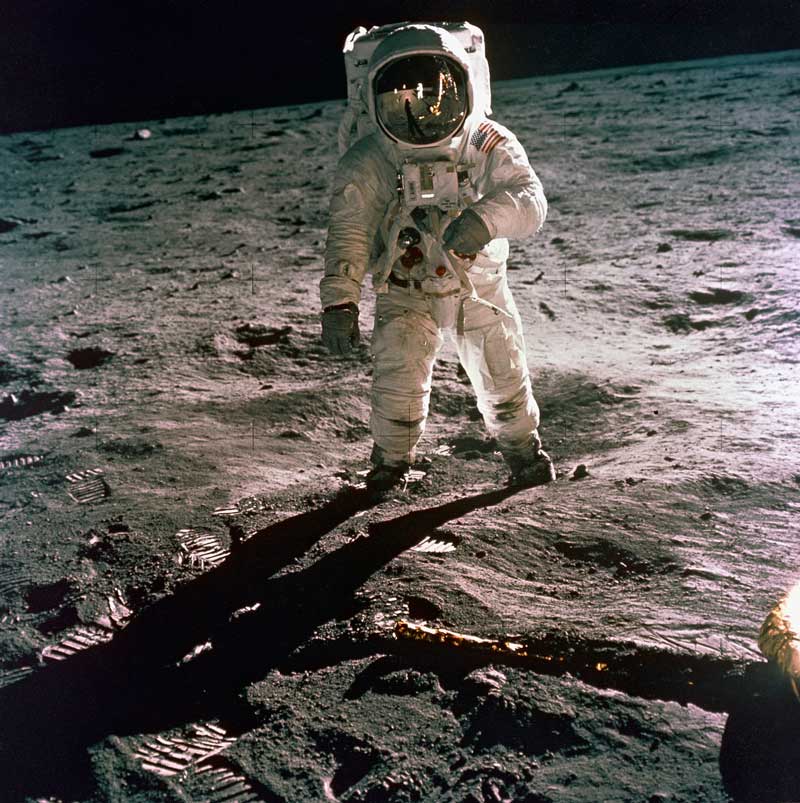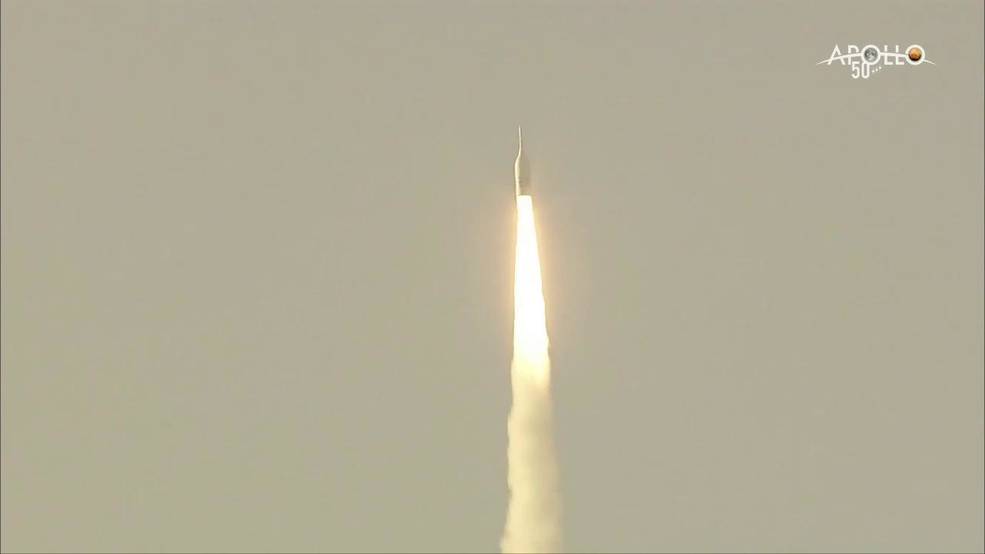On July 20, 1969, the bulkily space-suited figure of astronaut Neil Armstrong descended the ladder of Apollo 11’s lunar lander, planted his boot in the Moon's gray dust, and declared: "That's one small step for a man, one giant leap for mankind." This first visit to Earth's natural satellite—the culmination of NASA's Apollo 11 mission—was a seminal moment in the history of human space exploration (Fig. 1). See also: Moon; Space flight

Watched live on television by some 650 million viewers, courtesy of a camera installed on one of the lander's legs, Armstrong's lunar jaunt was followed shortly thereafter by that of his crewmate, Edwin "Buzz" Aldrin. The third astronaut on the mission, Michael Collins, stayed in orbit around the Moon, piloting the command module that would later return the three men to Earth on July 24 after an atmospheric re-entry and a splashdown in the Pacific Ocean. The astronauts brought back to Earth 22 kilograms (49 pounds) of lunar rocks and dirt after leaving numerous science experiments on the Moon to learn more about its origin, history, and current state. Over the following few years, five more successful Apollo missions followed, delivering 10 more people to the Moon's desolate surface. Since 1972, however, no one has returned; in fact, no one has since gone beyond low-Earth orbit, where the International Space Station circles our planet—about 400 km (250 mi) in altitude. (For a comparison, the Moon's average distance is 384,000 km, or 239,000 mi.) See also: Astronautics; Space station
Now, five decades later, the achievements of the Apollo 11 mission are receiving renewed attention, especially in light of the United States' intentions to return to the Moon by 2024 under a mission dubbed Artemis. Numerous milestones will need to be reached, though, in readying the Space Launch System and Orion module—the two main pieces of hardware serving in place of the Saturn V rocket and Apollo module, respectively, that originally ferried humankind to the Moon. On July 2, 2019, an important step for Artemis took place with the successful demonstration of an Orion launch abort system (Fig. 2). Intended to help save the lives of astronauts in the event of a launch mishap, the abort system separates the Orion crew module from its rocket mounting and then orients the vessel for a safe splashdown.

The Space Launch System and Orion crew module build upon many of the technologies and strategies utilized during the Apollo mission. For instance, the crew module sits atop a rocket, just as the Apollo module did, and in distinction to the space shuttle, NASA's workhorse space vehicle from the early 1980s until 2011, which attached to its launch rocket's side. The tip is actually the safest place on a rocket, considering that ice and other potential debris can break loose during launch. This scenario ultimately doomed the space shuttle Columbia in 2003, which suffered thermal tile damage as insulation fell during liftoff. Days later, the shuttle failed to withstand the inferno of atmospheric re-entry, breaking apart and killing all six astronauts aboard. See also: Space shuttle
Continuing development of the Artemis mission and vehicle capabilities is further meant to serve as a bridge to Mars. While Mars is considered to be humankind's next logical destination in space exploration, reaching Mars poses a far greater challenge than reaching the Moon. Barring a breakthrough in propulsion, traveling to the “Red Planet” would require more than a year’s travel time in deep space, versus mere days to the Moon. A long-duration mission of this sort would expose astronauts to unprecedented amounts of harmful cosmic radiation, coupled with the physical ravages of prolonged weightlessness. See also: Mars; Propulsion; Radiation; Radiation injury to plants and animals; Space biology; Weightlessness





